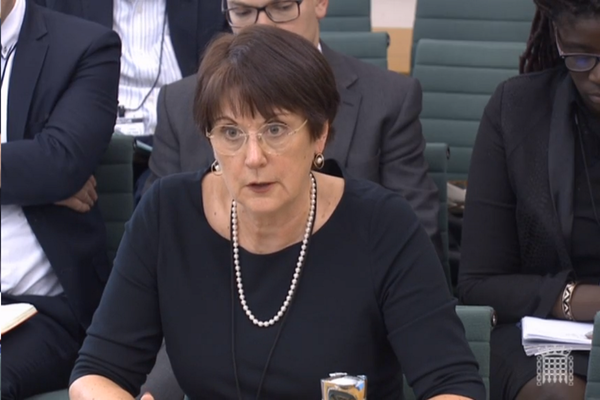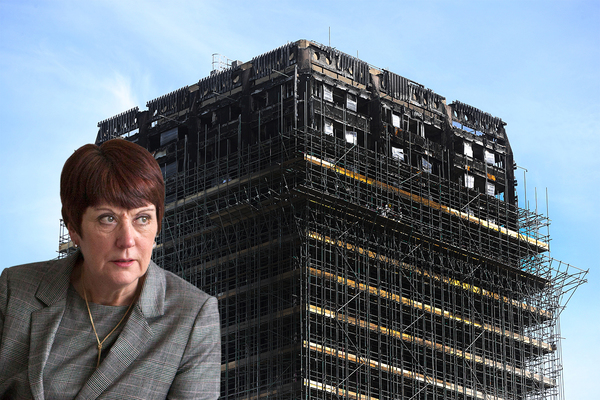You are viewing 1 of your 1 free articles
Association hopes to demonstrate how Hackitt Review could be applied across sector
A housing association which became an ‘early adopter’ of the Hackitt Review’s recommendations on building safety says it hopes to test how these could be applied by landlords of all sizes.
Housing associations Salix and L&Q joined Kier and Willmott Dixon yesterday as guinea pigs for Dame Judith Hackitt’s review of building regulations, which was set up after the Grenfell Tower fire disaster.
Lee Sugden, chief executive of Salix, told Inside Housing: “We’ve been working with MHCLG [Ministry of Housing, Communities and Local Government] through the Hackitt Review process and it just seemed the logical next step to help with this to try to shape how it will work.
“We will be working on elements of the Hackitt Review so that they can be implemented across a range of landlords large and small.”
Mr Sugden said the 8,500-home Salford-based landlord had 18 tower blocks, some of which had failed the post-Grenfell tests.
“But the Hackitt Review is not just about changes to the [building] regulations, it includes things like joint competent authorities for building safety and building safety managers who are visible to residents and we will be working on those,” he added.
Housing secretary James Brokenshire told parliament last week: “The Hackitt Review identified a lack of leadership within the construction and fire safety industries as a contributory failure on building safety.
“I want the construction industry to drive action on building safety now, leading from the front and changing practice and behaviour. We know there are many who are already doing the right thing, and I want to encourage more in the industry to do the same.”
More on the Hackitt Review
The Hackitt Review: key recommendations at-a-glance Inside Housing breaks down the key areas of the final report from Dame Judith Hackitt’s review of building regulations
Brokenshire: government will consult on banning combustible cladding The housing secretary announces a consultation despite the Hackitt Report findings
Dame Judith Hackitt: the interview Dame Judith Hackitt spoke to Inside Housing shortly after releasing her much-anticipated review of building regulations
Final Hackitt report calls for new regulatory body but does not ban combustibles Dame Judith Hackitt has called for a regulatory body to be set up to oversee the safety of buildings, but has stopped short of a prescriptive approach or the banning of dangerous cladding.
Grenfell survivors ‘saddened and disappointed’ by Hackitt report Reaction to Hackitt’s findings decision to ignore calls for a ban on combustible cladding
The Paper Trail: The Failure of Building Regulations
Read our in-depth investigation into how building regulations have changed over time and how this may have contributed to the Grenfell Tower fire:
Never Again campaign
In the days following the Grenfell Tower fire on 14 June 2017, Inside Housing launched the Never Again campaign to call for immediate action to implement the learning from the Lakanal House fire, and a commitment to act – without delay – on learning from the Grenfell Tower tragedy as it becomes available.
One year on, we have extended the campaign asks in the light of information that has emerged since.
Here are our updated asks:
GOVERNMENT
- Act on the recommendations from Dame Judith Hackitt’s review of building regulations to tower blocks of 18m and higher. Commit to producing a timetable for implementation by autumn 2018, setting out how recommendations that don’t require legislative change can be taken forward without delay
- Follow through on commitments to fully ban combustible materials on high-rise buildings
- Unequivocally ban desktop studies
- Review recommendations and advice given to ministers after the Lakanal House fire and implement necessary changes
- Publish details of all tower blocks with dangerous cladding, insulation and/or external panels and commit to a timeline for remedial works. Provide necessary guidance to landlords to ensure that removal work can begin on all affected private and social residential blocks by the end of 2018. Complete quarterly follow-up checks to ensure that remedial work is completed to the required standard. Checks should not cease until all work is completed.
- Stand by the prime minister’s commitment to fully fund the removal of dangerous cladding
- Fund the retrofitting of sprinkler systems in all tower blocks across the UK (except where there are specific structural reasons not to do so)
- Explore options for requiring remedial works on affected private sector residential tower blocks
LOCAL GOVERNMENT
- Take immediate action to identify privately owned residential tower blocks so that cladding and external panels can be checked
LANDLORDS
- Publish details of the combinations of insulations and cladding materials for all high rise blocks
- Commit to ensuring that removal work begins on all blocks with dangerous materials by the end of 2018 upon receipt of guidance from government
- Publish current fire risk assessments for all high rise blocks (the Information Commissioner has required councils to publish and recommended that housing associations should do the same). Work with peers to share learning from assessments and improve and clarify the risk assessment model.
- Commit to renewing assessments annually and after major repair or cladding work is carried out. Ensure assessments consider the external features of blocks. Always use an appropriate, qualified expert to conduct assessments.
- Review and update evacuation policies and ‘stay put’ advice in the light of risk assessments, and communicate clearly to residents
- Adopt Dame Judith Hackitt’s recommended approach for listening to and addressing tenants’ concerns, with immediate effect
CURRENT SIGNATORIES:
- Chartered Institute of Housing
- G15
- National Federation of ALMOs
- National Housing Federation
- Placeshapers














